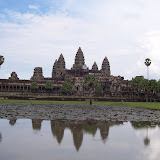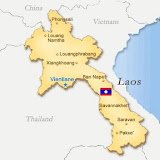

As Indian Silicon Valley, Bangalore is getting rich on information technology development. Ladies in the previous destination wear Saree. In Bangalore, people become fashionable, and wear T-shirt and jeans.
Bangalore becomes the first Indian city to get electricity supply in 1905. The establishment of Infosys in 1981 laid the foundation for IT development. The city is the highlight of Thomas L Friedman The World is Flat.
Today, I join a 4-hour tour by www.bangalorewalks.com. The tour organizer is a Bangalore native who has lived in overseas countries, such as United States. He has witnessed a lot of changes and development are taking place in his home after going back to India, and history is disappearing, prompting him to explore and promote the past of Bangalore. The 4-hour tour is very informative.
The contemporary history of Bangalore is started from 18th century. The British started colonial war against India after it was defeated in the American independent war. In 1799, the British defeated the king of Mysore, and used Bangalore as a military base.
The British invasion had introduced missionaries and churches to the city. Bangalore was a backward city at that time, and things were waiting to be done. The British had attracted Indians around the country for infrastructure work in the city, and attracted British soldiers to come to Bangalore with lands. In Mahatma Gandhi Road, there were once private residencies occupying huge land. Some private residencies even include a tennis court.
But the old town of Bangalore was still governed by the king of Mysore. The new and old town is divided by Cubbon Park. And the differences between the new and old town is still obvious till today. The new town is energetic for changes, while the old town is sticking to tradition.
The churches built by the British were not welcomed by the locals at that time. Many of them said the churches were the place for ``having the heads chopped’’. It was probably because the churches were built for military officers, which should be regarded as military facilities and establishments that made people fearful.
Apart from churches, schools and infrastructure, the British had also brought Bangalore with bars. Bars are still commonly seen even today. With more income generated by IT development, people in Bangalore love going to bars, making the area lively at night. I have seen many people from Southeast Asia here. I cannot distinguish whether they are Japanese, and whether they are overseas born Chinese. I believe most of them are attracted to the city by IT development. We can see proof that India is waking up.
Large department stores are everywhere, and prices are expensive. I needed to pay Rs356 for a dinner at Elbony last night, which included a soup, mutton and a bottle of water. This is 10 times more expensive than my previous lunches, which cost only Rs31. A room for two people also cost Rs795, several times higher than the previous destinations.

But not all of the people are getting rich. Poverty sudden confronts you when you are appreciating the stable life enjoyed by the people. Poverty gap in the city is serious. I have seen women in saree holding their babies begging for money after finishing dinner at Elbony. I have also seen some hawkers in the street. This makes me feel sad. The dinner at Elbony only cost HK$70, but this amount is significant to the poor people. HK$70 is enough for feeding these people for so many days. How many people can benefit from the tourism income? Is it always the situation that wealth is concentrated in the hands of few people? What is the meaning of development if a large group of people is not benefit? And development also causes pollution.

Lift operator: Hope he will feel happy for a while by having this picture taken.

Asking for direction in this city is difficult. It is not because the people are not friendly, but mainly either because they cannot speak in English or they don’t know the direction. Asking for direction is very easy in the previous destinations. I believe it is because the citizens of the small town have never left their home.
I found that the staff and owner of guesthouses were friendly and eager to introduce visitors their India when I was traveling in the North four years ago. I became aware of Bollywood movies because the owner of a guesthouse in Jaipur introduced it to me.
But I do not feel such atmosphere in Mysore and Bangalore. I have only seen a big reception counter after entering the guesthouses. Staff are polite and effective, but they are also cold in quoting the room charges. It seems that they are only reciting the stuff written in the travel guidebook when you ask for traffic information. I have no intention to ask them the characteristics of the cities.
Price is a top priority for choosing guesthouse, and friendly people are the second. I don’t need a swimming pool and gym room. I would rather chat with the owners than watching satellite TV. I would appreciate staff and owners who will try their best to look for answers to my questions.
I want to be greeted by the owners and staff when I wake up or finished my tour. I want to be asked whether I want a cup of coffee and whether I need hot shower. I don’t want to be indifferently told that hot shower between 6am and 10am.
Maybe my previous guesthouses are too impressive, making me difficult to get used to Mysore and Bangalore.









No comments:
Post a Comment